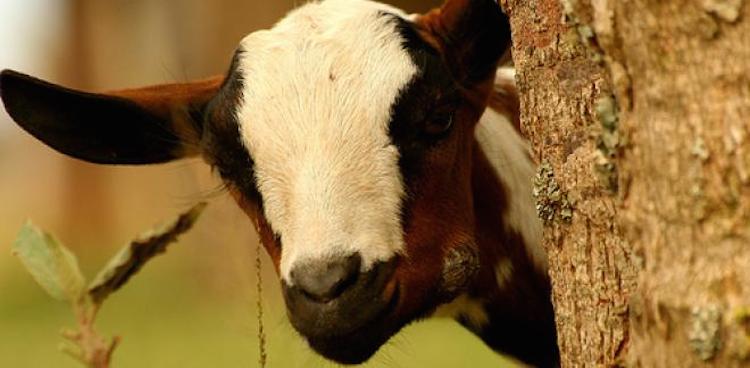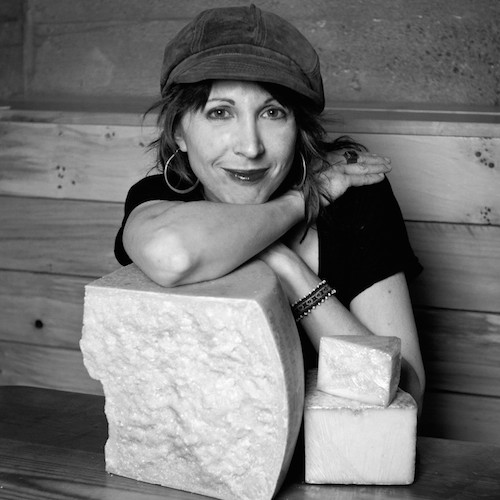
People often ask what inspired me to become a food writer and cooking instructor. I think they expect to hear heartwarming recollections of a childhood spent beside my mother at the stove, and reminiscences of glorious holiday repasts, table groaning with the bounty from our garden. They anticipate my memories of milking goats, and tangy chèvre on homemade bread for an after-school snack. They imagine my Russian grandmother frying latkes for breakfast (using eggs I’d collected from our flock of Rhode Island Reds). And, to a certain degree, there is truth in these examples. Looking back, I am quite certain my formative experiences with food are what shaped my career. But the reality is that, while I grew up on a small ranch, the daughter of a large animal veterinarian and a former barrel-racing-champion-turned-homemaker, my own culinary education had a few inconsistencies.
I did watch my mom cook sometimes; she still has a way with instant mashed potatoes and cracks open a mean jar of Prego. Our neighbors had a garden, and at the age of ten, I established a roadside produce stand, yet Birds-Eye was a staple at my own dinner table. The eggs I gathered each morning (when I wasn’t being held hostage in the henhouse by our sadistic, child-hating rooster) my mother whisked in a microwave-proof bowl, before nuking them into rubbery oblivion. I was in college before I learned that scrambled eggs aren’t really “made” in a microwave.
My paternal grandmother was the daughter of a Russian immigrant. Grandma Miller possessed a heavy New York accent, and she was—my dad will agree—the worst cook this side of Minsk. The (real, not instant) potatoes in her latkes were an oxidized grey, the resulting pancakes flabby and greasy from improperly heated oil. Small wonder I was the pickiest eater on the planet, utterly exasperating my Depression-era parents who, let’s face it, were only trying to embrace the advent of convenience foods. The one time my mom tried making yogurt and cheese from our goat’s milk (she was having an early 1970’s back-to-the-land moment), the results were not exactly edible (in retrospect, I don’t think she realized the milk required starter cultures). So we instead drank goat milk by the gallon, and in the process my family became huge caprine aficionados. We bred our Nubian doe, Go-go, every year, and ended up keeping several of her doelings; the bucks we donated to Heifer Project International.
For my part, I adored our goats. Even when I fed Go-go an uninflated balloon, it was with the best of intentions (it was Easter, and I thought she’d appreciate its pretty pink color). In sixth grade, I decided to follow in my older brother’s footsteps and raise goats for a 4-H project. I bounced out of bed each morning to milk Rose, a distant relative of the late Go-go (who died of natural causes, not from ingesting peony-hued rubber). Despite my rural upbringing, our property was located in a peaceful canyon only a couple of miles from what is today a populous bedroom community of Los Angeles. There were a few other families with children up the road, but I was the only one living on a ranch. The rooms at Westlake Elementary School were packed with upper-middle-class, mostly white kids, and it turned out they didn’t share my goaty enthusiasm.
It was Jason Raciti, a criminal in the making if ever there was one, who dubbed me “Goat Girl.” It was the first week of school, and as part of our “What I Did for Summer Vacation” oral reports, I’d waxed poetic about Rose and the wonders of lactation. If memory serves, I even passed around Dixie cups of her milk for my classmates to taste. I was waiting for my mom to pick me up from school in our elderly, wood-paneled station wagon, when Jason appeared by my side. He looked me up and down, a sneer on his handsome face. “Hey Goat Girl,” he drawled, leaning in close and taking a long, exaggerated sniff. “You smell like a goat. Why would anyone want a goat, anyway? Why do you even go to this school? Why don’t you go back to your stupid farm?” Mercifully, my mom arrived at that moment, but before I could escape to the safety of the car and the slobbery kisses of our three dogs, Jason yelled, “Bye, Goat Girl! Don’t forget to wear your overalls tomorrow!”
I think it’s pretty safe to say that someone, somewhere, eventually kicked Jason Raciti’s ass to kingdom come, or incarcerated him. Unfortunately, before that could happen, I essentially became known as Goat Girl for the remainder of the year, and developed several nervous tics that abated only after we sold Rose and I instead concentrated on raising rabbits (fuzzy, rodent-like creatures were apparently on the list of “cool” pets to own). I don’t recall exactly when I allowed my goat obsession to resurface, but suffice it to say, I’m now a contributing editor at culture, work in a cheese shop, and live in Seattle, one of the few cities in the US that allows residents to keep backyard dairy goats.
So, while my somewhat dichotomous culinary upbringing played a large role in my career of choice, I usually opt for a shorter, easier, wholly truthful answer. “I became a food writer because when I was eight years old and walking my brother’s goat at the county fair, a middle-aged man asked me, ‘What type of dog is that?’ It was at that moment I realized, most people don’t have a f—–g clue where their food comes from.”
Thanks, Mom and Dad. And you too, Jason Raciti.




